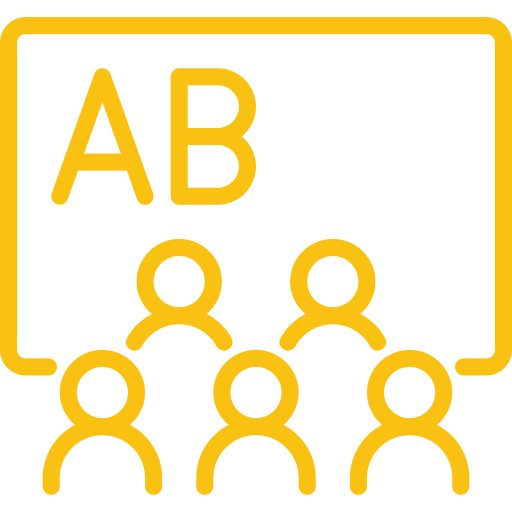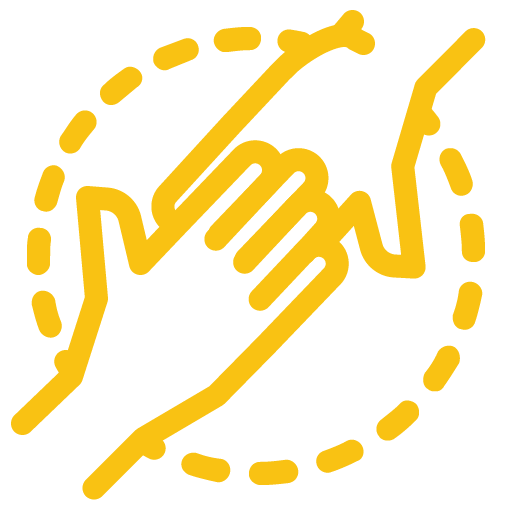Anger management exercises, my friends, are like the cool breeze on a sweltering summer day. They swoop in just when you feel your blood boiling and turn that Hulk-like rage into something more akin to Bruce Banner’s mild annoyance. We’ve all been there, most likely as a student and as an educator.
Do you comprehend what I’m alluding to? That moment when a student starts filming a Tik Tok video during your lesson or a parent denies their child would ever say those nasty words to you. Yeah, those moments.
But don’t worry! I’m not here to judge. Everyone has their triggers; it’s human nature after all. What I’m here for is to arm you with some tried-and-true anger management exercises.
Trust me colleagues, I’ve been teaching freshman students for 25 years now in the south suburbs of Chicago, I’ve dealt with a few things.
So, get ready folks. This is the stuff that’ll help you keep your cool, even if your boss decides to do a pop in observation the day before Christmas break!
Understanding Anger Management: A Fun Exploration
You know that feeling when you step on a Lego barefoot? Yeah, anger management is about not throwing the entire Lego set out of the window. So let’s delve into what this whole anger management thing really means and why it matters.
“Anger is an acid that can do more harm to the vessel in which it is stored that to anything on which it is poured.”
– Mark Twain
In other words, understanding your fury doesn’t mean becoming a zen monk overnight but finding ways to control your temper tantrums (we all have them).
The Role of Cognitive Behavioral Interventions in Anger Management – It’s Not Rocket Science.
Cognitive behavioral interventions are basically the emotional equivalent of getting stuck at a red light during rush hour – they help slow things down so you don’t run someone over (figuratively speaking). They’re pretty nifty tools used as part of anger management therapy.
- Mindfulness – The art of being present without reaching for your phone every 5 seconds.
- Breathing techniques – Taking deep breaths instead of screaming at the guy who cut you off in traffic.
- Journaling – Writing down thoughts rather than shouting them from rooftops.
Research shows these exercises work wonders. They’ve been found to reduce angry outbursts among people quicker than pizza disappearing at an office party.
But remember folks. While cognitive-behavioral interventions are fantastic partners with various calming practices, learning how to manage stress is also key. Because let’s face it: high-stress levels could turn anyone into Hulk.
And that’s the scoop — whether it’s through mindfulness, journaling or perhaps a mix of both.
Imagine anger management as mastering the skill of not hurling your Lego set out the window when you step on a brick barefoot. It’s about controlling that rage and keeping Hulk under wraps, instead of turning into an instant zen master. Cognitive behavioral interventions act like our emotional stoplights in peak traffic – they help us slow down so we don’t metaphorically bulldoze anyone.
Decoding Your Body’s Anger Warning Signs
Your body is a bit like that annoying friend who can’t keep a secret. When you’re getting angry, it spills the beans by showing your body’s anger warning signs. But hey, we can turn this chatty Cathy into our ally for managing our temper.
The Chatter of Physical Cues
Your heart might be thumping faster than a drummer on caffeine or your palms could be sweating more than an ice cube in the Sahara. And those clenched fists? A clear sign of your anger issues and a rise in blood pressure.
Some folks even report feeling hot flashes or chills when their inner volcano is about to erupt. Paying attention to these signals from your body isn’t just useful—it’s crucial. They are early warnings from your internal fire alarm system, letting us take steps towards cooling down before things get too heated.
Mindfulness: The Secret Decoder Ring
You know how detectives use special glasses in movies to see hidden clues? Mindfulness works kind of like that with emotions. It helps us stay present and observe our feelings without judgment—like Sherlock Holmes but with less tweed involved.
This practice lets us tune into what’s happening inside physically and emotionally as irritation starts creeping up. Over time, it gets easier not only to recognize these signals but also to respond constructively instead of having anger outbursts when you’re angry.
Sweat Out Stress: Regular Exercise To Rescue.
Sweat Out Stress: Regular Exercise To Rescue.
“Exercise not only changes your body, it changes your mind, your attitude, and your mood.” – Unknown
Know your body, people. Because physical activity does wonders for mood management by releasing endorphins—the feel-good chemicals—in our system.
In short, regular exercise plays DJ at the party called life, spinning tunes that uplift moods and dial down rage levels—a vital part of any comprehensive strategy for managing anger effectively.
Regular exercise helps you control anger rather than letting it control you. You’ll begin feeling calmer in stressful situations, often reducing anger and the other underlying emotions related to aggressive behavior. This is due to the effects of building confidence and helping with blood pressure when you work out near your target heart rate during physical activity.
Feeling better and improving your health conditions, seems like a no-brainer.
Our bodies often spill the secrets of our mounting frustration through signs like a quickened heartbeat or damp hands. Paying attention to these signals is key – consider it an early alert from your body. Mindfulness gives you the tools to decode these messages, letting you react in a positive way before your anger takes over. Regular physical activity can often be one of the most beneficial anger management strategies available.
Relaxation Techniques for Anger Management: A Chill Pill for the Rage Monster
Rather than succumbing to an unbridled rage, let’s take a closer look at how relaxation techniques can help us manage our anger. But don’t worry, there’s no need to break everything around you. Instead, let’s take a deep dive into relaxation techniques such as progressive muscle relaxation and breathing exercises.
The Magic of Progressive Muscle Relaxation
“An anxious mind cannot exist in a relaxed body..” – Edmund J. Bourne
Well folks, it is indeed possible with something called progressive muscle relaxation. It’s all about starting from your toes and moving up till you reach the top of your head – sort of like climbing an invisible ladder but without breaking any sweat.
This method helps people become more aware of their physical sensations when they are angry – think tight fists or clenched jaws. The next time you sense these signs cropping up during an argument over whose turn it is to do dishes again, remember this technique. This requires focus to be an effective method of anger management control.
Breathing Exercises: Not Just For Yoga Enthusiasts.
If ‘breathe in… breathe out…’ sounds familiar only because you’ve heard them at yoga classes while struggling with downward dog pose, then hold on. Deep breathing isn’t reserved solely for those who love green juice and leggings.
In fact, taking slow controlled breaths can help bring peace amidst stormy emotional seas inside our minds.
Maintaining regular practice though is crucial here – think training yourself so that even if someone jumps onto the subway just before doors close, leaving you behind; instead of flipping out, calmness takes over.
In essence, when you feel anger rising, breathing slowly is one of the more effective ways to calm anger.
Key Takeaway:
Does anger make you feel like a bull in a China shop? Try some relaxation techniques to cool down that inner beast. Progressive muscle relaxation and breathing exercises can be your personal zen masters during fits of rage. Start at your toes, work up to your head – it’s easy peasy. And remember, slow controlled breaths aren’t just for yoga enthusiasts; they can soothe even the wildest emotional storms.
Physical Activity for Anger Management: The Sweatier, the Happier?
Let’s get real here. Rage or irritation is like that uninvited guest who shows up at your party and refuses to leave. But guess what? We’ve got a secret weapon – physical activity.
“Regular exercise can be as effective as hitting Ctrl+Alt+Del on your stress levels.” – Every Fitness Trainer Ever
In simpler terms, regular exercise not only gets you in shape but also shapes up your mood.
Sweat it Out: How Exercise Helps
When we get our bodies moving, endorphins – those natural happiness-boosters – are released.
- A Brisk Walk: You don’t need to train like an Olympian; just a brisk walk around the neighborhood works wonders. Plus, it gives you a chance to spy on Mr. Johnson’s weird garden gnomes. It also provides you the opportunity to spend time thinking, letting you work out small details while getting in some aerobic activity.
- Weightlifting: Focusing on a muscle group doesn’t just benefit your physique, it can help you build confidence and release endorphins. Anger control becomes easier to deal with when you are pushing your muscles (or hitting the punching bag).
The Many Faces of Physical Activities
All right folks, let’s break down some other beneficial activities that can help manage anger effectively:
- Martial Arts: Karate or Tai Chi isn’t just about breaking boards or achieving inner peace; they require concentration which helps channel energy constructively while providing an excellent workout.
- Yoga: Yoga combines movement with deep breathing exercises promoting mindfulness and tranquility within oneself. And no one ever threw a fit in child’s pose… well except maybe toddlers. This has been one of the most popular anger management techniques for many years.
- Running: They call it runners high for a reason. Next time you feel angry, go for a run to help reduce anger. You don’t have to run a marathon, and you should obviously pay attention to your body and not try to go all out early if you haven’t run much before.
Your New Routine Starts Here…
To make these benefits work for you, consistency is key when incorporating physical activities into your routine. Remember this golden rule: “Slow progress is still progress.” So even light activities done regularly will contribute towards managing emotions effectively.
You can’t expect to see results on day one, these techniques work when you breathe deeply and make regular exercise a part of your weekly routines. It involves slowly working out your anger in more productive ways.
Sweat away your stress. Regular exercise is like hitting Ctrl+Alt+Del on anger. From brisk walks to yoga, consistency in physical activity can shape up your mood just as it shapes you up. #AngerManagement #ExerciseYourStressAway
Identifying Triggers and Challenging Angry Thoughts: The Real Tea
Have you ever wondered why you suddenly transform when someone takes your parking spot? Or why just hearing a certain person’s voice makes you want to pull out all your hair? That, my pal, is referred to as an irritant that causes anger. But don’t worry – there are ways to deal with this.
“We all have buttons that, when pressed, send us into survival mode.” – J.S. Wolfe
In short, knowing what sets you off is half the battle won in effectively managing anger. You just need to identify triggers so you can practice anger management.
The Great Trigger Hunt
Finding your personal triggers isn’t as hard as finding Waldo. One way to identify them is by keeping an “anger journal.” Jot down everything that annoys you each day and how angry it made you feel on a scale of 1-10 (ten being ‘I’m going to explode’). Over time, patterns may emerge showing which events consistently make steam come out of your ears.
Battling the Beast: Challenging Angry Thoughts
Cognitive behavioral therapy (CBT) techniques are highly effective in helping people challenge negative thought patterns associated with their anger triggers. It’s like having a little lawyer inside our head who cross-examines our thoughts:
- “So Mr. Angry Thought, do you have any solid evidence for feeling this enraged?”
- “Can we look at this situation from another perspective?”
This questioning helps debunk irrational beliefs that lead to unnecessary irritation.
Mindset Makeover: Re-framing Negative Thinking Patterns Associated With Anger
Let’s not forget, practicing empathy and seeing things from other viewpoints can help dial down how often we get mad, especially when it comes to disagreements with others. And don’t overlook self-care. Regular workouts, getting enough sleep, and eating right all play a part in controlling our emotions better. This way, we’re less likely to fly off the handle for no good reason.
Think of pinpointing your anger triggers as a thrilling treasure hunt, where the reward is gaining better control over your emotions. Keep an ‘anger journal’ to record what sets you off and use cognitive behavioral therapy techniques to challenge these thoughts. Picture having a tiny lawyer in your mind, questioning Mr. Angry Thought.
Expressing Anger in Productive Ways
What really drives me up the wall? Not being able to express anger in a productive manner. But hey, we’re not all monks meditating on a mountaintop. And as teachers we have to be careful how we show what we’re feeling in front of our students.
So let’s delve into the details of how you can tap into your inner angry feelings without destroying everything in sight or driving everyone away.
If you’ve ever experienced a volcanic eruption of rage (who hasn’t?), then this Talk Through Your Feelings tool might just become your new best friend. It’s like having a personal therapist on speed dial.
The Negative Effects of Frequent Anger
Frequent outbursts of anger aren’t exactly beneficial for your well-being. Surprise, surprise. Excessive anger is like an unwelcome guest who overstays their welcome, wreaking havoc on your physical health and mental state.
No one wants an increased risk of heart disease or stroke as a parting gift from uncontrolled anger, right?
Social Consequences: The Domino Effect
Aside from causing stress-induced ulcers, chronic hostility also has social implications. It’s like Godzilla stomping through Tokyo – it strains relationships when you let anger feel like it’s driving your thoughts and actions.
- Nobody enjoys spending time with someone who goes from zero to angry in an instant.
- Your professional reputation could take more hits than a punching bag.
- Your family may start considering investing in riot gear.
Taming the Beast: A Fresh Approach to Anger Management
- Effectively expressing anger requires identifying the triggers that ignite our rage-filled reactions. By implementing early detection systems, we can redirect these emotional peaks before they escalate unnecessarily.
- We also have some tried-and-tested methods up our sleeves: taking deep breaths (because sometimes ‘just breathe’ isn’t terrible advice), stepping away from situations that provoke us (like defusing bombs), and jotting down our thoughts during moments of annoyance (think venting without terrifying anyone).
Feeling like a volcano about to erupt? Don’t let your anger be the unwelcome guest that wreaks havoc on your health and relationships. Instead, channel your inner Hulk productively by talking through feelings, identifying rage triggers, and practicing deep breathing. It’s all about taming the beast without turning into Godzilla.
Additional Strategies for Anger Management
Navigating anger isn’t always a walk in the park. But hey, don’t sweat it. You’re not alone in this battle against fury and excessive rage.
The good news is that there are additional strategies to help manage these emotions better. One strategy involves playing dodgeball with negative thoughts; you see them coming, and whoosh – you avoid dwelling on them.
Think of these pesky thoughts as mental traffic jams causing unnecessary stress hormones to spike up. The trick here? Just like real-life traffic jams, they pass too.
Mental Health Connections with Excessive Rage
Rage fits aren’t just about red faces and clenched fists. Below the surface, mental health plays a critical role in understanding and managing rage.
A link between excessive rage and certain types of mental illness exists – kind of like how peanut butter connects with jelly (only less tasty). And understanding this connection can give us an upper hand in managing anger effectively.
This systematic review suggests cognitive behavioral interventions have been effective for managing such situations – quite a game-changer if you ask me.
Negative Thoughts: A Catalyst for Fury?
You ever notice how negativity tends to feed fury like a kid feeds candy at Halloween? Well, guess what? We’ve got some tricks up our sleeves too.
To combat this sugar rush effect caused by negative thinking patterns triggering bouts of wrath, mindfulness techniques might be your golden ticket. They promote positivity while defusing destructive thought processes quicker than muscle tension from one’s shoulders after a long day at work. So let’s get mindful people.
And remember: life’s way funnier when we’re laughing instead – even during those metaphorical (and literal) traffic jams.
Dodging the storm of anger isn’t easy, but with the right tools, you can handle it. Think of negative thoughts as dodgeballs – avoid them rather than dwelling on them. Remember that fury often hides deeper mental health problems; it’s more than just red faces and clenched fists. Cognitive behavioral interventions can be a useful tool in this journey.
FAQs in Relation to Anger Management Exercises
What are the 3 R’s of anger management?
The three R’s of anger management are Recognize, Retreat, and Relax. Recognizing your triggers helps you avoid situations that provoke rage.
How do you control rage outbursts?
To control rage outbursts, use relaxation techniques like deep breathing or progressive muscle relaxation. Regular physical activity also helps manage stress levels.
What are the 12 steps of anger management?
The 12 steps involve things like understanding anger, recognizing its signs, identifying triggers, using calming strategies like exercise or mindfulness practices, and learning to express it in a healthier way. Click the link to find out more.
What is the most effective therapy for anger?
Cognitive Behavioral Therapy (CBT) has proven highly effective in managing excessive rage issues by challenging negative thought patterns associated with fury.
Conclusion
Anger management exercises can be a valuable tool when navigating the turbulent waters of frustration and rage. Understanding the triggers that ignite our anger is a crucial first step in gaining control.
From recognizing warning signs to implementing relaxation techniques, each step brings us closer to a calmer state of mind. Engaging in regular physical activity can also work wonders in keeping our tempers in check.
But the journey doesn’t end there. It’s important to challenge our angry thoughts and find productive ways to express our feelings. This not only strengthens our emotional resilience but also helps us let go of negative thoughts.
Furthermore, understanding the connection between mental health and anger management is essential. By acknowledging and addressing our mental well-being, we can better navigate the challenges that trigger our anger.
In essence, managing anger is not about suppressing it, but rather channeling it into productive energy. With patience and practice, it is possible to transform anger into a positive force in our lives.
If you are looking to learn more about topics like this (while getting graduate credit), consider taking one of our graduate classes here at MTI. We offer the most affordable graduate classes on the market, developed by real teachers.
Unlike other companies, we have zero hidden costs, and we provide the syllabus before you sign up. Some surprises are good, but they shouldn’t involve your money or time.
And if you’re interested in teaching with us, feel free to reach out via any of our social media links, or send an email to [email protected] for more details.





















